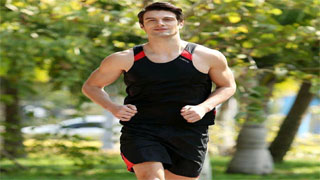
Knee tendinitis can cause stiffness, inflammation, and pain in the knee tendons. You cannot stretch tendons, but it can help reduce inflammation that causes tension. You can also stretch tight knee muscles and engage in other exercises to relieve stiffness and improve mobility.
Reduce knee tendon inflammation
Tendons are thick connective tissue bands that connect muscles and bones. They contain high concentrations of strong and tough collagen fibers, making them tear resistant but lacking elasticity. In fact, according to MIT, tendons should not be stretched at all.
Therefore, stretching exercises do not elongate tendons to relieve stiffness. The stiffness caused by tendinitis is due to inflammation, and tendinitis is usually caused by overuse. Reducing inflammation can alleviate tension in the tendons behind and in front of the knee.
There are multiple methods to treat inflammation at home. These measures include rest, ice packs, and over-the-counter anti-inflammatory drugs. You should also avoid exercise that can cause tendinitis. For example, if you are a runner, it is time to take a break or engage in cross training such as cycling or swimming.
Stretching and tightening the knee muscles
Knee tendon tension may be caused or exacerbated by tension in the knee muscles attached to these tendons. For example, tension in the leg muscles can lead to tension in the tendons behind the knee, while tension in the quadriceps can lead to tension in the tendons in front of the knee. Although you cannot stretch tendons, you can stretch muscles. Perform these stretching exercises on the hamstring, quadriceps, and calf muscles.
Action 1: Stretching the Legs
Lie on your back and bend your knees.
Lift one leg and grab the back of the thigh with both hands.
Keep your knees straight or slightly bent, pull your thighs towards yourself until you feel stretched.
Maintain for 15 to 30 seconds.
Release and change the edge.
Action 2: Stretching the quadriceps in a standing or kneeling position
The stretching of leg muscles is equally important compared to leg muscle strength training. Because stretching the leg muscles not only enhances their toughness and softness, but also relieves muscle soreness and discomfort after completing strength training. So next, let's introduce the stretching methods of the quadriceps muscles in both thighs.
Stand on one leg. If necessary, grab onto a chair or wall to help maintain balance.
Bend the other knee and grasp the front of the foot or ankle.
Keep your knees in line and pull your heels towards your hips until you feel a stretch in the front of your thighs.
Maintain for 15 to 30 seconds.
Release and change the edge.
Action 3: Stretching the quadriceps muscle in a lateral position
This stretching action may not be as common, but its stretching effect is also excellent. When doing this stretching action, we need to pay attention to extending our stretching side leg as far back as possible, so that our stretching side quadriceps have a stretching feeling.
At this point, you can extend your other leg, which is the lower leg, forward. In this situation, you can achieve better training results to a certain extent.
Action 4: Leg extension
Extend one leg backwards and stand with both feet flat on the floor.
Bend the front knee, keep the back leg straight, and point the foot forward. You should feel a stretch in the back of your calf. Maintain for 15 to 30 seconds.
Next, bend the hind legs and keep the weight on the forefoot. You should feel the stretch beneath the calf muscles. Maintain for 15 to 30 seconds.
Change sides and repeat.
Knee joint range of motion exercise
Flexibility is the ability of muscles to stretch, while mobility is the ability of joints to move throughout the entire range of motion. When your knees are tense, your range of motion is limited.
Suggest doing this exercise to improve activity ability. This is an auxiliary passive exercise where another person manipulates the legs; However, you can use towels or yoga bands to do it yourself.
Action 1: Assist in knee flexion
Lie down and stretch your legs.
Bend one knee and wrap a towel or strap around the middle of the foot.
Hold one end of the strap with each hand, with the knee and hips at a 90 degree angle.
Extend your legs completely and let your arms and straps stretch. Pull the strap towards your direction, causing your knees to bend and exceed 90 degrees.
Pull your knees towards your chest as much as possible, and then stretch your legs again.
Repeat 10 to 20 times.


